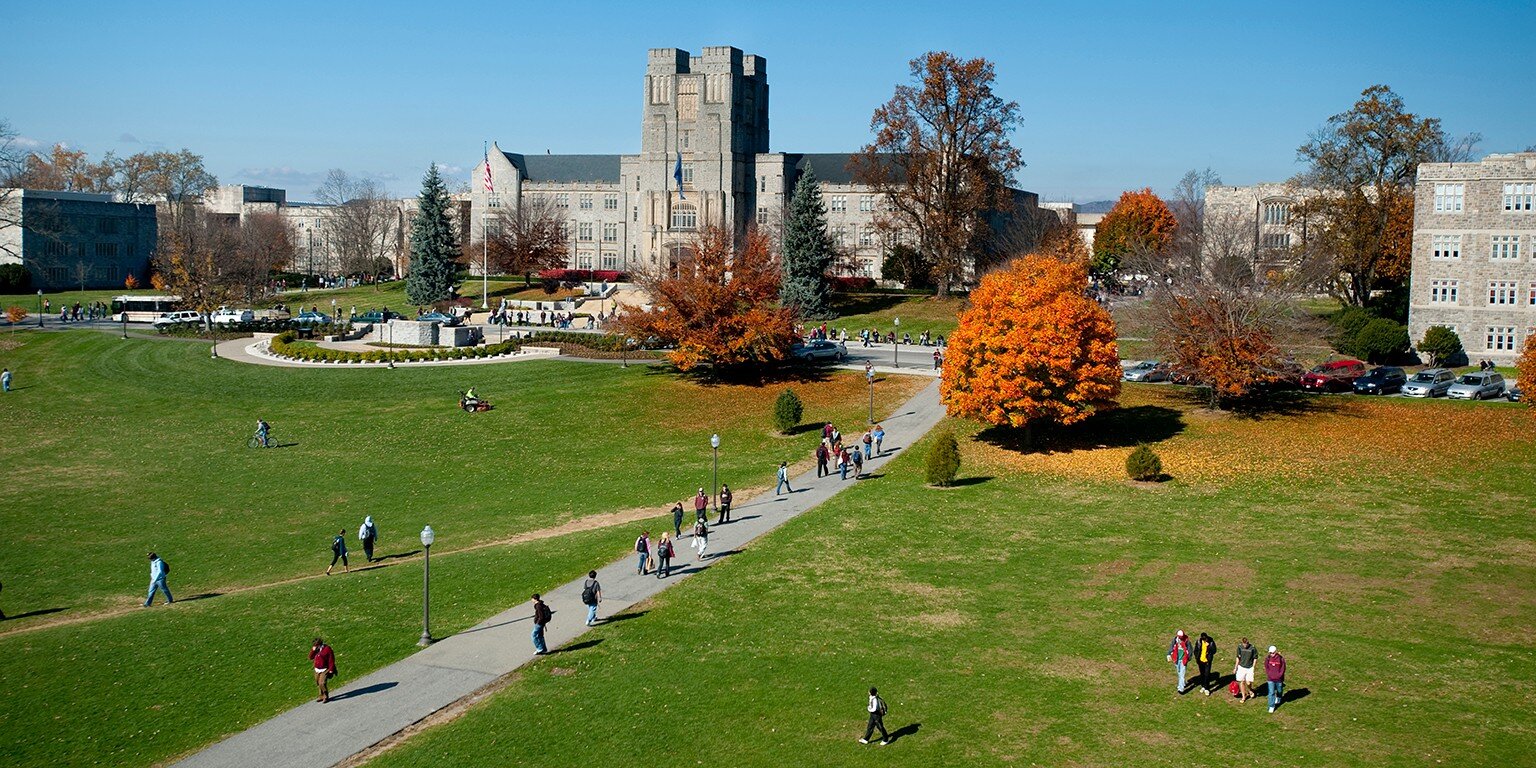EXHIBIT
CREATING HOME
BLACK INCLUSION AND COMMUNITY BUILDING
In this exhibit you can learn about the challenges and triumphs of the first generations of Black students at Virginia Tech. By Kenny Barnes.
The African American community has been integral to the success of Virginia Tech since its founding in 1872. African American workers helped to construct original campus buildings in the 1870s, and by the 1880s African Americans could be found both working and living on campus as janitors and servants. Although they could not attend VPI themselves, African Americans continued to work on campus throughout the 19th and 20th centuries, with several reaching considerable levels of prominence such as Floyd Meade, the first mascot performer and the man responsible for introducing the first Hokie birds to the Virginia Tech sidelines.
As African Americans continued to work at VPI serving the needs of white students and faculty, it wasn’t until 1953, with the arrival of Irving Peddrew III, that the African American community would see one of their own permitted to enroll at Virginia Tech. By the end of the 1950s, a total of eight African Americans students had been admitted to and attended VPI: Charlie Yates, the first African American to graduate from VPI, Floyd Wilson, Lindsay Cherry, Matthew Winston Sr., Essex Finney Jr., Robert Wells, and James Whitehurst Jr. "College Characters" from 1899 Bugle, depicting several Black workers of VPI including Floyd "Hardtimes" Meade Irving Peddrew III in cadet uniform, 1953 However, while African American students were finally able to attend VPI, they were still not granted the same rights as their white peers. Rather than live on campus with the rest of the student body, African American students were forced to live off campus at 306 East Clay Street with the Hoges, a local African American family. Responsible for feeding and lodging the first eight African American students, the Hoges were instrumental in the integration of Virginia Tech. As Essex Finney ('59) remembers: “Mrs. Hoge, Janie Hoge, who was the lady who made her home available to us as students, I do think that she deserves a lot of credit for what she did….she was a great hose, she looked after us as if we were her own children. She fed us. She gave us advice. She kept us in line…” Lindsay Cherry outside Hoge house, 1954. Click image for an oral history with Cherry. Lindsay Cherry outside the Hoge house, 1956 Essex Finney with Mr. and Mrs. Hoge at their home after his graduation, 1959. Click image for an oral history with Finney. Charlie Yates at graduation, 1958. Dr. Charles Yates was the first Black student to graduate from Virginia Tech. Click image for an oral history with Yates.
The support and hospitality displayed by the Hoges was not unique to them, but rather something practiced by all among the African American community. When Charlie Yates matriculated to VPI in 1954, he remembers the welcoming feeling from the African American community, “Yes, there was a special effort made. Because we essentially lived in that community, we became part of that community. We were students that came over to campus during the day, and once our studies were over, we were back as part of the community.”
While New Town served as the heart of the African American community, African American families lived in other spots around Blacksburg including Wake Forest, Grissom, and several families lived on Clay and Jackson Streets.
More than just housing the first African American students, the African American community was vital in the social lives of these early students as well. African American students were invited to all the social and civic activities of the African American community, including dances, church, and occasional trips to concerts and clubs in Roanoke. Early students also would visit Christiansburg Institute, a historic and premier African American secondary school, for social events. In fact, on the day of Charlie Yates’s graduation, he married a graduate of Christiansburg Institute.
Charles Johnson, a local barber, was instrumental in the lives of several of the first African American students. Forbidden from cutting African American students' hair in the Tech Barber Shop located in Squires, Johnson would cut their hair in their rooms off campus or after the shop's hours. During this time Johnson grew close with several of the students including Matt Winston Sr., who describes how Johnson helped to introduce him to the local area, "He would come by our living quarters on Clay St. and cut our hair since there was no other place nearby to provide that service. We became good friends, and he showed me many places that only a native would know. He was well known and knew many people throughout the area. He introduced me to a great number of them; and after a time, I began to feel at home."
The physical separation from campus and the student body was just one of the obstacles faced by the first African American students. However, despite these obstacles, these students were able to succeed in no small part because of the support they received from the African American community. Welcoming them into their lives and homes, the African American community was a vital piece in the integration of Virginia Tech. Christiansburg Institute. Via Christiansburg Institute Museum and Archives Lindsay Cherry walking from the Hoge house to campus. This 20 minute walk was made upwards of four times per day. Cadets having their haircut in Squires barbershop, 1957 Lindsay Cherry in Hoge house, 1956 List of Virginia Tech's first eight black students
Charles Johnson (left) with Lindsay Cherry, Charlie Yates, and Essex Finney at the Black Alumni Reunion, March 26 1999
BLACK COMMUNITY ENGAGEMENT IN THE 1960S AND BEYOND BARRIERS OF ENTRY INTO WHITE CAMPUS CULTURE FORGING A STUDENT COMMUNITY A CONSTANT BATTLE BETWEEN INCLUSION AND EXCLUSION ADMINISTRATION PROMOTING DIVERSITY


















